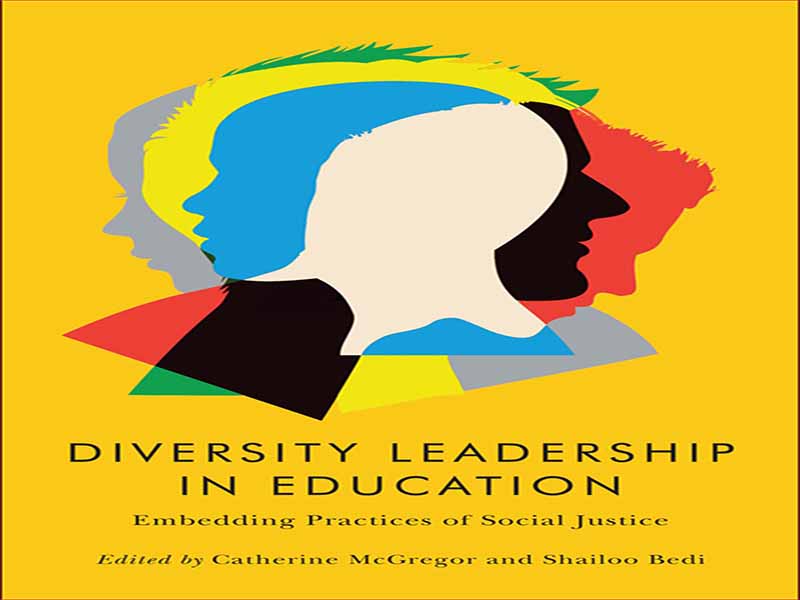- عنوان: Diversity leadership in education
- نویسنده: Catherine McGregoe
- حوزه: مدیریت آموزشی
- سال انتشار: 2024
- تعداد صفحه: 459
- زبان اصلی: انگلیسی
- نوع فایل: pdf
- حجم فایل: 4.03 مگابایت
وقتی این کتاب را در سال 2019 شروع کردیم، میدانستیم که رهبری متنوع برای اینکه چگونه مؤسسات آموزشی میتوانند بخشی از تحول اجتماعی، فرهنگی و سیاسی لازم برای ایجاد یک دنیای کاملاً عادلانه باشند، ضروری است. ما احساس کردیم که مجبور بودیم درک خود را از رهبری گسترش دهیم و به رهبران و دانشمندان مختلفی که برای گنجاندن عدالت اجتماعی در اعمال روزمره خود تلاش می کنند، صدا دهیم. از آن زمان، اعتقاد ما به اینکه رهبری متنوع بسیار مهم است، تنها زمانی تقویت شده است که بی عدالتی و نابرابری اجتماعی توسط همه گیری جهانی (COVID-19) بزرگ شده است. رهبری در همه عرصه ها – به ویژه در آموزش – به ندرت اهمیت بیشتری داشته است. به عنوان مثال، نژادپرستی و بیگانه هراسی مداوم علیه مسلمانان، یهودیان، مردم چین و به طور کلی آسیایی تبار و مهاجران در طول بحران COVID-19 تشدید شده است. اثرات تهدید کننده زندگی COVID-19 بر جمعیت های حاشیه نشین، افرادی که در فقر زندگی می کنند و افراد دارای معلولیت، نژادپرستی و نابرابری سیستماتیک را در جامعه و سیستم مراقبت های بهداشتی کانادا آشکار کرده است که مرگ جویس اچاکوان در سال 2020 تنها یک نمونه است. COVID-19 به عنوان تقویت کننده نژادپرستی ساختاری درازمدت عمل کرده است، نژادپرستی که در استعمار و نسل کشی مردم بومی مشهود است، به ویژه رفتار وحشتناک با کودکان بومی در مدارس مسکونی (کمیسیون حقیقت و آشتی 2015). نژادپرستی ساختاری همچنین زیربنای خشونت مداوم علیه زنان بومی است، زنانی که پنج برابر بیشتر از زنان دیگر بر اثر خشونت مبتنی بر جنسیت جان خود را از دست می دهند (عفو بین الملل 2004). نژادپرستی ساختاری انگیزه جنبش «زندگی سیاهپوستان مهم است» را برانگیخت که از مرگ وحشتناک سیاهپوستان کانادایی و آمریکایی پدید آمد (که با مرگ ترایون مارتین و جورج فلوید در ایالات متحده و جرمین کاربی در کانادا تشدید شد). نژادپرستی و نابرابری سیستماتیک نیز در سیستم های آموزشی کانادا آشکار است. دانشآموزان در مدارس کانادا از اعمال نژادپرستانه فاحش و غیرقابل توجیه رنج بردهاند. به عنوان مثال، در سال 2016، یک دختر شش ساله سیاهپوست در هیئت مدرسه ناحیه پیل توسط پلیس با دستبند قرار گرفت. در نوامبر 2020، یک معلم BC از دانشآموزان خواست تا «پنج نتیجه مثبت تحصیل در منزل» را به عنوان یک تکلیف مشخص کنند. و در سال 2021، رادار نفوذی زمینی وجود داشت که آنچه را که جوامع بومی قبلاً میدانستند نشان داد: قبر 215 کودک بومی در کاملوپس در محل سابق مدرسه مسکونی کملوپس هندی. همه این بحران ها منشأ اجتماعی و سیاسی دارند و اساساً با امتیازات سفیدپوستان، نابرابری، نابرابری، نژادپرستی و تبعیض مرتبط هستند. علاوه بر این، این بحرانها از طریق کنشهای فردی بهطور اجتماعی شکل میگیرند، و بهطور سیستمی و تاریخی در همه ساختارها و سازمانها تعبیه میشوند، با گفتمانهای عمیق ریشهدار و مستمر طرد، به گونهای عمل میکنند که به «دیگران» غیرغربی آسیب میرساند. روشهای ضمنی و اغلب طبیعیشدهای که در آن روایتهای تفاوت حفظ میشوند، همچنان در مدارس و در میان مربیان وجود دارند و ما را به علاقهمان به موضوع رهبری تنوع سوق میدهند.
When we started this book in 2019, we knew that diverse leadership was essential to how educational institutions can be part of the social, cultural, and political transformation necessary to create a fully equitable world. We felt compelled to expand our understandings of leadership and give voice to diverse leaders and scholars working to embed social justice in their everyday practices. Since then, our conviction that diverse leadership is crucial has only strengthened as social injustice and inequity are magnified by the global pandemic (COVID-19). Leadership in all arenas – especially in education – has rarely mattered more. For example, persistent racism and xenophobia against Muslims, Jews, people of Chinese and, more broadly, Asian descent, and immigrants have been exacerbated during the COVID-19 crisis. The life-threatening impacts of COVID-19 on marginalized populations, those living in poverty, and those with disabilities have laid bare systemic racism and inequality in society and the Canadian health care system, with the death of Joyce Echaquan in 2020 just one example. COVID- 19 has acted as an amplifier for long-term structural racism, racism evident in the colonization and genocide of Indigenous people, especially the horrific treatment of Indigenous children in residential schools (Truth and Reconciliation Commission 2015). Structural racism also underlies the persistent violence against Indigenous women, who are five times more likely than other women to die from gender-based violence (Amnesty International 2004). Structural racism motivated the Black Lives Matter Movement that emerged from the horrifying deaths of Canadian and American Black people (heightened with the deaths of Trayvon Martin and George Floyd in the US and Jermaine Carby in Canada). Systemic racism and inequality are also obvious in Canadian education systems. Students in Canadian schools have suffered from gross and inexcusable acts of racism; for example, in 2016, a six-year-old Black girl in the Peel District School Board was put into handcuffs by police. In November 2020, a BC teacher asked students to identify “five positive outcomes of Residential schooling” as a homework assignment. And in 2021, there was ground-penetrating radar revealing what Indigenous communities already knew: the gravesite of 215 Indigenous children in Kamloops at the former site of the Kamloops Indian Residential School. All of these crises are social and political in origin, foundationally linked to White privilege, inequality, inequity, racism, and discrimination. Furthermore, these crises are socially constituted through individual actions, and they are systemically and historically embedded in all structures and organizations, with deeply rooted and persistent discourses of exclusion operating in ways that harm non-Western “others.” The implicit and often naturalized ways in which narratives of difference are maintained remain present in schools and among educators, leading us to our interest in the topic of diversity leadership.
این کتاب را میتوانید بصورت رایگان از لینک زیر دانلود نمایید.
Download: Diversity leadership in education




































نظرات کاربران